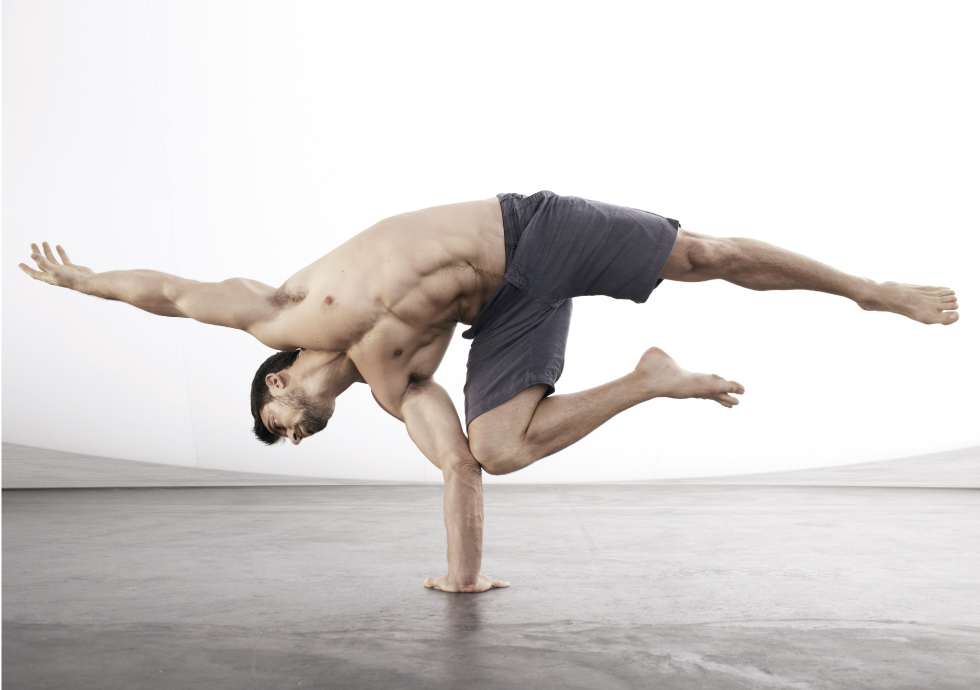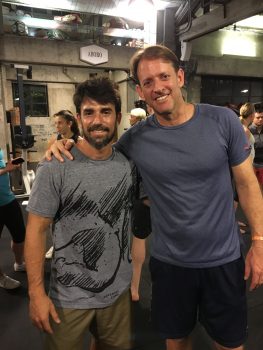 I discovered Ido Portal in a YouTube video about 5 years ago. I was immediately impressed. In part, I was impressed with his physical prowess. Ido has developed a capacity for movement that very few people can ever hope to obtain. Watching him maneuver his body through space, one can’t help but be inspired. Of course YouTube is awash with videos of people showing the extreme possibilities of human performance and fitness. But feats of strength and mobility, when performed by Ido, transcend fitness. They become art.
I discovered Ido Portal in a YouTube video about 5 years ago. I was immediately impressed. In part, I was impressed with his physical prowess. Ido has developed a capacity for movement that very few people can ever hope to obtain. Watching him maneuver his body through space, one can’t help but be inspired. Of course YouTube is awash with videos of people showing the extreme possibilities of human performance and fitness. But feats of strength and mobility, when performed by Ido, transcend fitness. They become art.
But even more impressive than watching Ido move, was hearing him speak about movement. He has dedicated his life to studying and thinking about movement and has developed a philosophical approach to the subject that immediately called into question every other piece of fitness knowledge I had ever learned. By the end of that 6 minute video, I knew that the idea of “fitness” as I had come to know it would become obsolete, and that Ido would be ushering in a new age of “movement.” (See Movement is the New Fitness.)
Last month, I had the chance to participate in a two-day Movement X workshop with Ido in Shanghai. Most of the attendees, as you might imagine, were people who have already dedicated their lives to movement in one form or another. I spent two days alongside yoga instructors, personal trainers, dancers and martial artists, scribbling furiously in our notepads and practicing new ways of exploring the capabilities of our bodies and minds.
It is far easier to understand what these “professional” movers would get out of a workshop like this. Most people who watch a video of Ido’s acrobatics would assume that his lessons are for advanced practitioners only. But as Ido says, the videos of him doing the “sexy” things like back flips, muscle-ups and one-armed handstands are only a way to get people in the door. Movement is for anyone who has a body.
Here are 5 things I take away from my time with Ido that I think apply to anyone with a body, regardless of “fitness” level.
- Movement is life. Absence of movement is synonymous with death. We tend to appreciate this fact when we struggle with any loss of movement capacity, through injury, disability or disease. But we don’t often appreciate the corollary—that by expanding our movement capacity we improve our ability to live and to express ourselves.
- Microscopic movement. Ido says, “Some movement you see with a telescope, some you see with a microscope.” Movement, at its core, is not about flashy acrobatics. Those are just possibilities to explore. It’s also about exploring the ability to manipulate each vertebra in our spines, exploring the complexities of the shoulder joint, listening to the sensory acuity of our feet, etc.
- Movement preparation. Most fitness experts, personal trainers, physical therapists or yoga instructors will talk about the importance of proper alignment. To Ido, there is no such thing as improper alignment, only improper preparation. As much as we try to constrain it, the natural world is not “aligned.” If we only practice moving in specific aligned patterns (as most fitness or yoga teachers would suggest,) we are not prepared for the real world. Misalignment will happen, and when it does, we are vulnerable. Ido proposes preparing the body for movement in the real world. Movement that is not constrained by any dogma about “proper form.”
- Movement awareness. I anticipated my body being sore after a two day movement workshop. I did not anticipate how my brain would be on fire. In many fitness practices, it is all too easy to mindlessly repeat repetitive patterns, leaving the mind out of the equation. In Ido’s approach to movement, there is no separation. Movement practice is about solving problems, tuning into your own body, developing greater awareness of how your body adapts to the environment. Movement is about training your mind as much as your body. While most exercise programs recommend improving by increasing the amount of load or the amount of volume, Ido increases the complexity. The mind always has to be engaged.
- Movement as medicine. I tore my rotator cuff the week before the movement workshop. It was too late for me to cancel, so I decided to go anyway and just do what I could. If I had followed my own intuition, or listened to the advice of almost any health or fitness expert, I would have rested my shoulder. Instead, I went to a two-day movement workshop where I explored the movement capacity of every joint in my body. My goal was to work around the injury and just do the best I could. But by the end of two days I was doing pullups and dips on gymnastics rings and working on my muscle-up. My shoulder is still not 100%, but I believe it is way better now than it would have been without challenging it through movement.
Today, I take movement classes from one of Ido’s students in Hong Kong, Andres Vesga (an amazing mover and teacher in his own right.) When I tell people I’m going to “movement class,” I get a lot of funny looks. It is hard to explain. And yet, there is something about this movement philosophy that is so pure—it taps in to the core of who we are as a human beings. Our bodies evolved for movement. And all of us have far more capacity for movement that is yet to be explored and expressed, so why not explore those possibilities?
“The best reason to move,” says Ido, “is because we can.”
Keep moving my friends.


Great video, Fitness is very important for health , thank you for sharing the post.